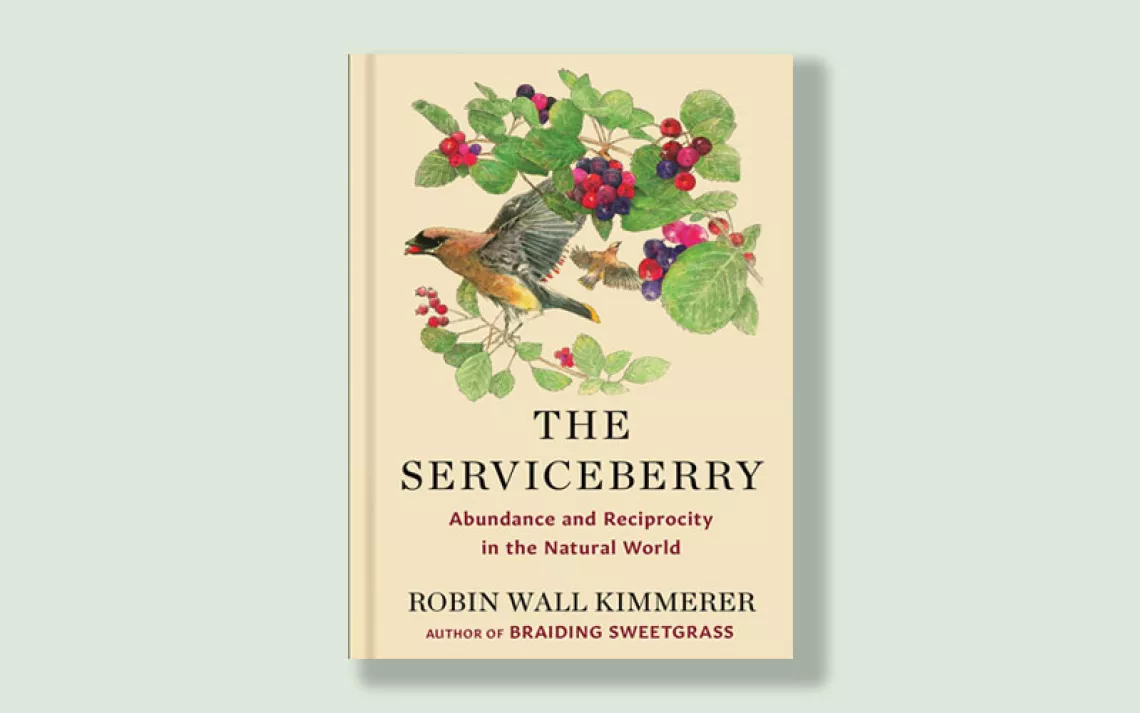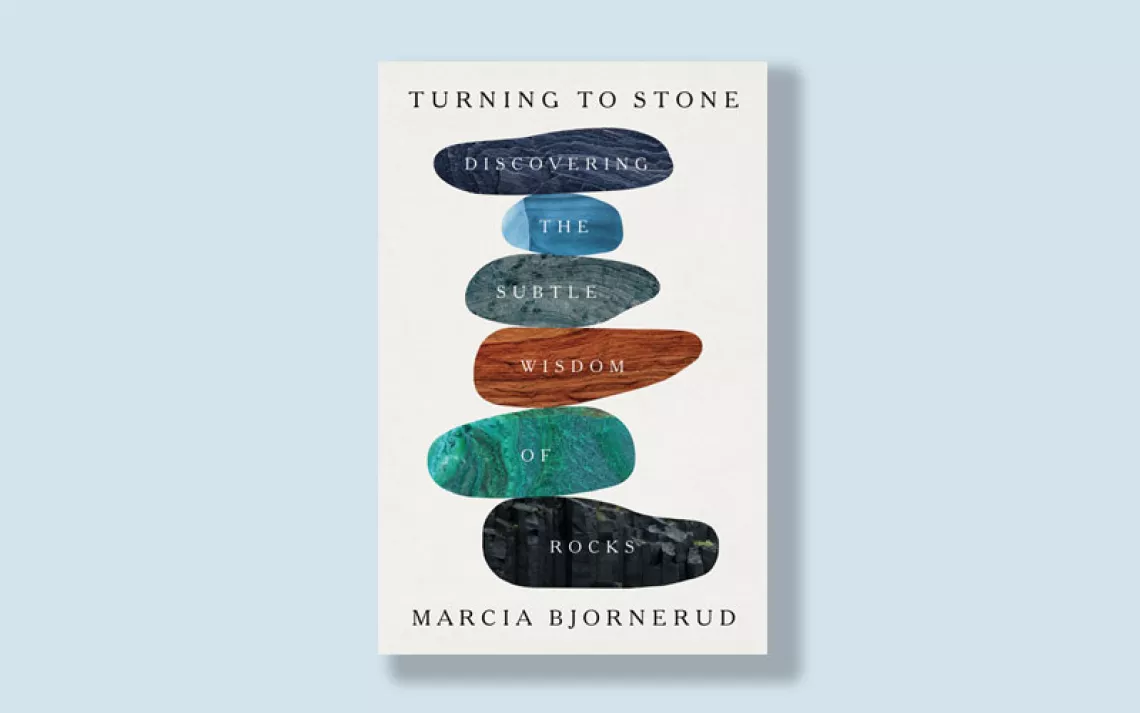5 Must-Read Books for Your Spring Reading List
These page-turning stories illuminate all that is worth saving in our world

Photo by iStock/baona
Looking for a page-turning spring break, when you'll finally have some time to kick back with a great book? Look no further. From stories of fire and water to the fight for Indigenous land rights across North America, these five books illuminate all that's worth saving in our world and lift up the stories of those who dedicated their lives to protecting it.
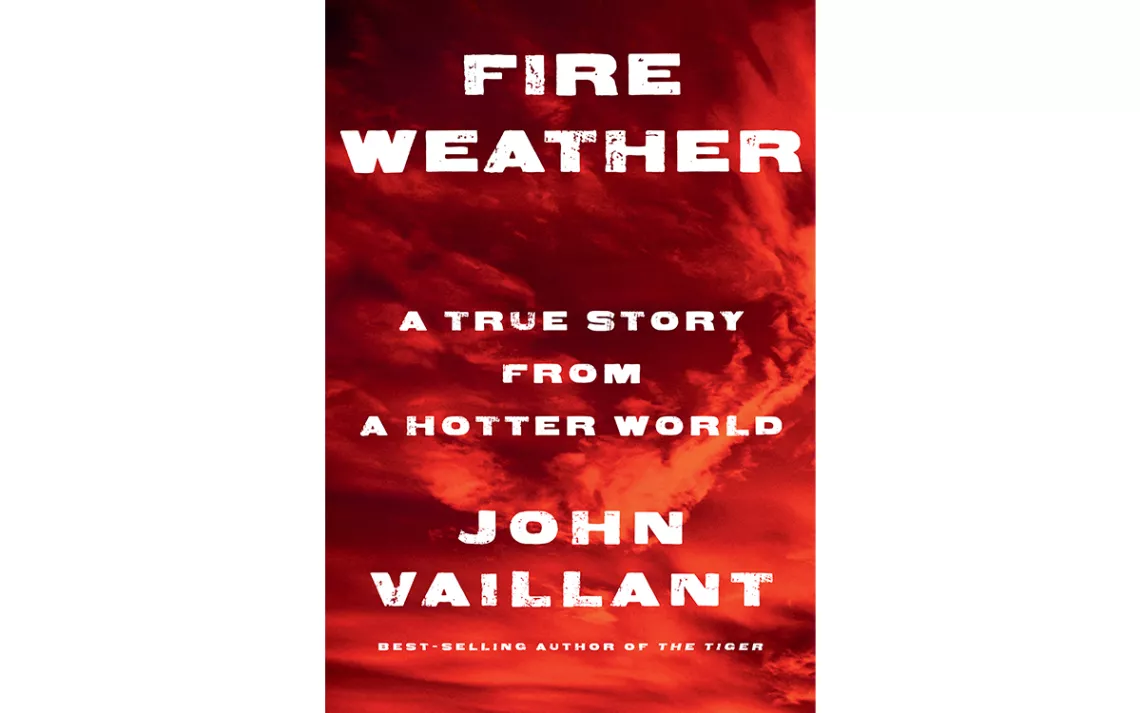
Fire Weather: A True Story From a Hotter World
By John Vaillant
Knopf, 2023
We are all burners at heart, according to John Vaillant. And no, he’s not talking about those who patronize that perennial gathering in the desert with its combustible effigy.
At the heart of so much of what makes human life what it is—from how we cook our food and power our homes to entertainment, agriculture, transportation, and technology—there is, or was at some point, fire. Since the dawn of the Industrial Revolution and the capitalism that drove it, never have we been so given to burn so much, from candles and pilot lights to stoves and boilers, from combustion engines and generators to coal-fired power plants. Our pyromania has come at a steep price: the burning of fossil fuels and as a result, the steady release of greenhouse gas emissions heating up our planet. Enter the age of climate crisis, or the Anthropocene, or what professor and former wildland firefight Stephen J. Pyne once coined "the Pyrocene: the age of fire."
“Fire is a hydrocarbon’s ultimate expression,” Vaillant writes in Fire Weather: A True Story From a Hotter World. We Homo sapiens are the primary vehicle through which that expression finds itself most fulfilled, a species whose fate is so bound to the fact and the fury of fire that Vaillant has his own new phrase to coin: "Homo flagrans. Burning man."
But Vaillant is after much more than another assessment of global warming. Fire Weather is a gripping, richly narrated story that reads like a climate thriller in places, its often fast-paced narrative layered with detailed history and fascinating science. At the center of this epic is Fort McMurray in northern Alberta, Canada, where one of the dirtiest forms of fossil fuel extraction—strip mining, rock crushing, and steam cleaning dirty bitumen sludge for the purpose of refining it into oil—has left a mammoth scar on the surface of the earth so large it can be seen from outer space. In effulgent prose, Vaillant takes us into the heart of this chthonian place and puts us right there, amid the ash and blackened dust—the Pyrocene’s Apocalypse Now:
"… mile upon mile of black and ransacked earth pocked with stadium-swallowing pits and dead, discolored lakes guarded by scarecrows in cast-off rain gear and overseen by flaming stacks and fuming refineries, the whole laced together by circuit board mazes of dirt roads and piping, patrolled by building-sized machines that, enormous as they are, appear dwarfed by the wastelands they have made. The tailings pond alone cover well over a hundred square miles and contain more than a quarter of a trillion gallons of contaminated water and effluent from the bitumen upgrading process. There is no place for this toxic sludge to go except into the soil, or the air, or, if one of the massive earthern dams should fail, into the Athabasca River."
All of this fire and brimstone (and the fossil-fuel capitalism at its heart) led to one of the most destructive fires Canada has ever seen. Vaillant, the Vancouver-based author of The Tiger and The Golden Spruce, re-creates in painstaking detail the story of a monster fire that broke out in May 2016 and consumed nearly all of Fort McMurray. So severe was the inferno that it created its own weather patterns. It took two full months to finally subdue the blaze, leaving behind billions of dollars in damages.
Fort McMurray serves as the catalyst for a greater investigation in Fire Weather of how the tar sands industry came to be and who suffered the most as it evolved into what it became. Meanwhile Vaillant’s taut storytelling puts us right beside residents who fled the massive blaze as it poured over surrounding neighborhoods—people like Paul Ayearst, a lifelong resident of the boreal forest, and his family—and the heroism of the police and first responders who led the evacuation efforts that saved lives.
Lessons abound in this must-read story about fire, industry, and capitalism and ultimately, climate change. “There is no other natural force or element over which we have such a compelling illusion of control,” Vaillant writes. “But like Ariel to our Prospero, fire is a begrudging servant. Selfish and willful it yearns, above all, for freedom, which it will take at any opportunity and at any cost.” —Jonathan Hahn
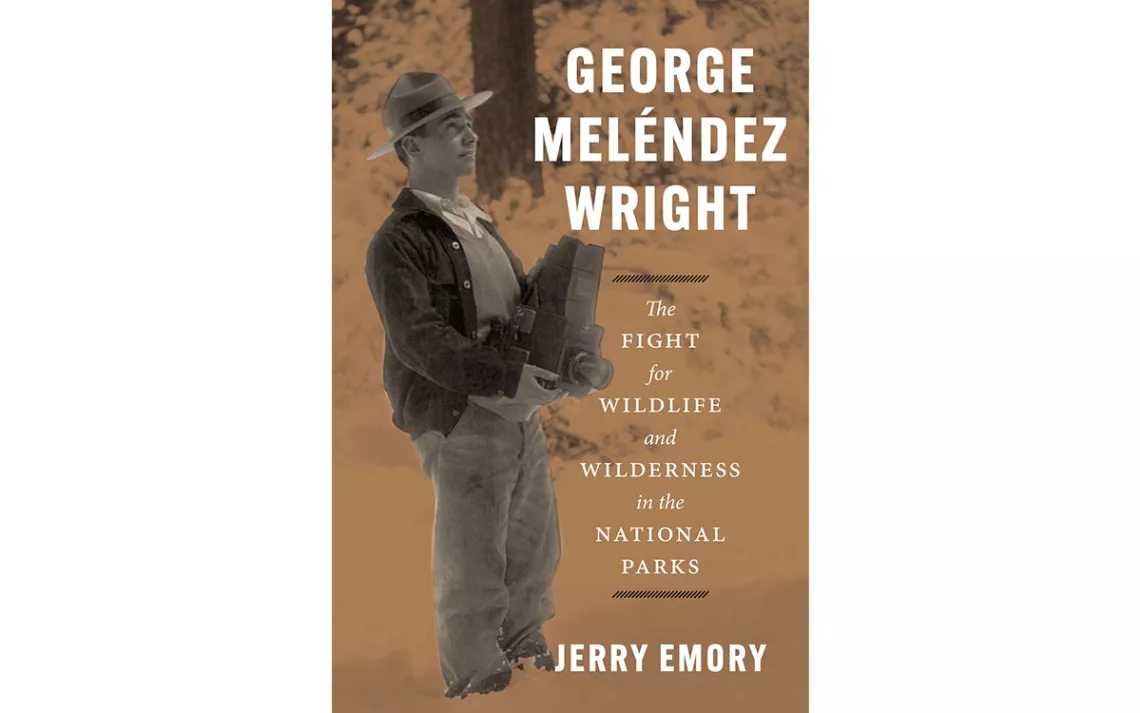
George Meléndez Wright: The Fight for Wildlife and Wilderness in the National Parks
By Jerry Emory
University of Chicago Press, 2023
National parks are often known for the big personalities who created them. But anyone who has enjoyed those protected spaces benefited from the conservation work of one lesser-known figure: George Meléndez Wright. The son of an American shipping tycoon and an El Salvadoran debutante, Wright struck out from his home in San Francisco on a quest for wonder that took him to every national park in the West before the age of 23. His passion ran so deep that, early in his career, he paid for his own expeditions, an indication of his commitment to the work he loved: studying animals and nature.
In George Meléndez Wright: The Fight for Wildlife and Wilderness in the National Parks, Jerry Emory grants Wright the well-deserved credit he is due. Part biography, part historical account, the book reads like a love letter to Wright. “[H]e wanted to do something that had never been done before in the National Park Service: pursue wide-ranging field studies focusing on the status of wildlife species in the western national parks, and then use this information to create science-based wildlife management practices for the parks,” Emory writes.
The interest is also personal—Emory is married to Wright’s granddaughter—but this is a far richer project than simply exploring the family tree. The concept of science-based wildlife management in the Park Service could arguably be traced back to the work Wright and his colleagues did nearly a century ago, long before ethics were a part of current environmental laws. Back then, the parks, with their bear-feeding spectacles and elk pens, were more for human entertainment than for conservation. However, Wright, the first Latino to hold a professional position with the National Park Service, was out to change that. Emory also includes two contemporaries, Ben Thompson and Joseph Dixon, sprinkled throughout and lifts up the significance of their work along with the intrepid team of biologists who pushed tirelessly against an agency wary of progress. In many ways, the challenges they dealt with mirror many ills that plague wildlife management today—a mindset that favors eliminating carnivores, a people-first framework for management, and a resource-based approach to nature.
Emory encapsulates the positive impact that Wright, who died in a car accident at age 33, made in his short lifetime, overseeing the end of government-funded predator poisoning, bringing scientists on board at the NPS, and publishing the widely celebrated Fauna of the National Parks of the United States. The paper was one of the first reports with the sole purpose of cataloging wildlife in many of America’s most iconic parks, laying the groundwork for conservation for decades to come.
“Protection, far from being the magic touch which healed all wounds, was unconsciously just the first step on a long road winding through years of endeavor toward a goal too far to reach,” wrote Wright in one of his letters. “Yet always shining ahead as a magnificent ideal.” —Lindsey Botts
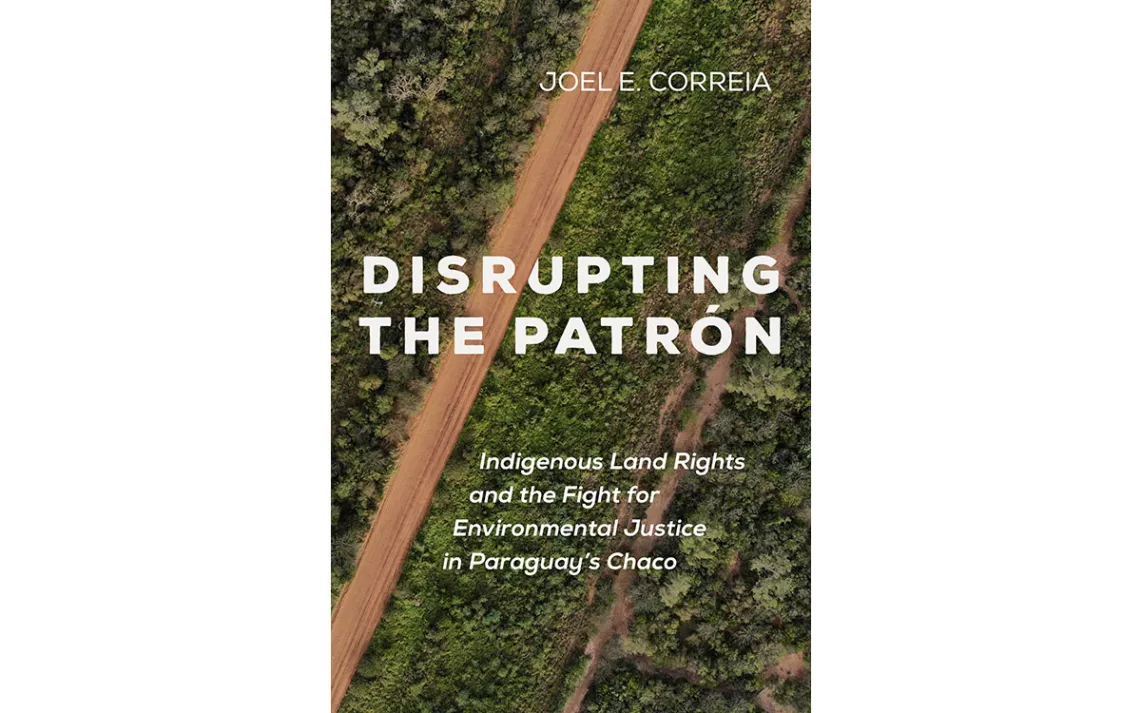
Disrupting the Patrón: Indigenous Land Rights and the Fight for Environmental Justice in Paraguay's Chaco
By Joel E. Correia
University of California Press, 2023
Joel Correia’s timely Disrupting the Patrón has arrived at a moment of unprecedented national investment in environmental justice within the United States, and as Indigenous-led calls for the return of stolen land across North America continue to grow. Correia’s in-depth ethnographic study of the Indigenous Paraguayan communities of Enxet and Sanapaná’s decades-long fight for return of their ancestral lands adds critical insight to this movement, pushing the limits of how environmental justice is often defined and pursued within the states while still honoring its origin.
The Paraguayan Chaco, once collectively shared by members of Enxet and Sanapaná, is now almost entirely composed of privately owned ranches that were built off their labor. Correia captures the jarring transition from open land to fenced-off parcels, stripped of the people and algarrobo trees that inhabited them to make room for roaming cattle—the country’s economic backbone as one of its leading exports.
From the onset of Disrupting the Patrón, Correia asks the reader to expand their understanding of the environment beyond an “external realm” to one “intimately related with human practice and belief systems.” It is with this context that he centers the dispossession of Enxet and Sanapaná’s land—among toxic waste exposure and other commonly protested hazards—as an environmental harm that inhibits the ability of both Indigenous communities to practice self-determination.
Correia is also open about his intention to not speak for his collaborators. He lets Enxet and Sanapaná speak for themselves, lifting up countless conversations with community members over mugs of tereré. The end result is an ethnography that masterfully uplifts, without reinterpreting or romanticizing, the ways in which Enxet and Sanapaná strategically work with and above state law to “disrupt settler land control” and restore connections with their homelands.
Moments of peace such as the long overdue return of Enxet and Sanapaná communities to their land shows why they’ve been fighting for nearly four decades: reconnection with the land allows them to create “new histories covering the sedimentary traces of settler occupation but never entirely erasing their effects.” Through his collaboration with both communities, Correia makes the case that “disrupting the patron” and striving toward Indigenous environmental justice “requires radical action” that crosses communities, sectors, and geographical borders—an invaluable reminder for anyone looking to support the environmental justice movement in the United States and worldwide. —Deja Curtis

The Three Ages of Water: Prehistoric Past, Imperiled Present, and a Hope for the Future
By Peter Gleick
PublicAffairs Books, 2023
Lately, it seems to be raining terrific books about water. Madeline Ostrander published a collection of reporting from the front lines of climate change, At Home on an Unruly Planet. Erica Gies’s Water Always Wins is an eye-opening globe-trotting travelogue with scientists she calls “water detectives.” Now, we have the most ambitious of them all: The Three Ages of Water by Peter Gleick, cofounder of the prestigious Pacific Institute, recipient of a MacArthur “Genius” award, and one of the world’s leading experts on virtually all aspects of water.
If there’s anything about water that’s not covered in Gleick’s book, it’s probably not worth knowing. From water’s origins following the Big Bang to its essential role in the development of life on Earth, the rise of human civilization, religion, public health, the legal system, and technology, to eminently workable ways of safeguarding this precious resource, it’s all contained in this magisterial read.
If that sounds a bit daunting, it really isn’t. Gleick may not be a lyrical writer in the vein of Rachel Carson or Barbara Kingsolver, but his prose is crisp, well-crafted, and thoroughly engaging. In fact, The Three Ages of Water is a fine summer “beach read” for those who tilt even the slightest bit wonky. Gleick’s book is encyclopedic in the best sense. You can dip into it based on what you want to read about at any given time and come away with enough new information to ponder for hours. For example, Gleick takes the reader on a fascinating historical tour of dams in what is now Jordan (built 5,500 years ago), China (5,000 years), and the massive Great Marin Dam in Yemen (built 3,000 years ago to contain an astonishing 400 million cubic meters of water, an engineering marvel that stood for a thousand years).
The book is perhaps most valuable for its concluding section, an urgent call to rethink and reorder our relationship with this most basic element of our existence. Gleick provides a detailed plan that, if implemented, could not only avert disaster but also create a far more equitable, prosperous, and pleasant world for all creatures, not just the two-legged kind. Crucial elements of his plan include establishing access to clean and affordable water as a basic human right, restoring ecosystems like wetlands and marshes that provide habitat for fish, plants, and animals, and eliminating “water-greedy” power plants.
Gleick is an optimist. “I believe that a positive future in the Third Age of Water is not only possible but inevitable,” he writes. While much of that optimism comes from his decades of work on water projects around the world, he admits that some measure of optimism is based on knowing that the alternative to a positive outcome is “simply too depressing to accept.”
He concludes with an assessment that is neither optimistic nor pessimistic, but simply factual. “If we fail to achieve the positive future for water,” Gleick declares, “it won’t be because we can’t. It will be because we didn’t.” —Osha Gray Davidson
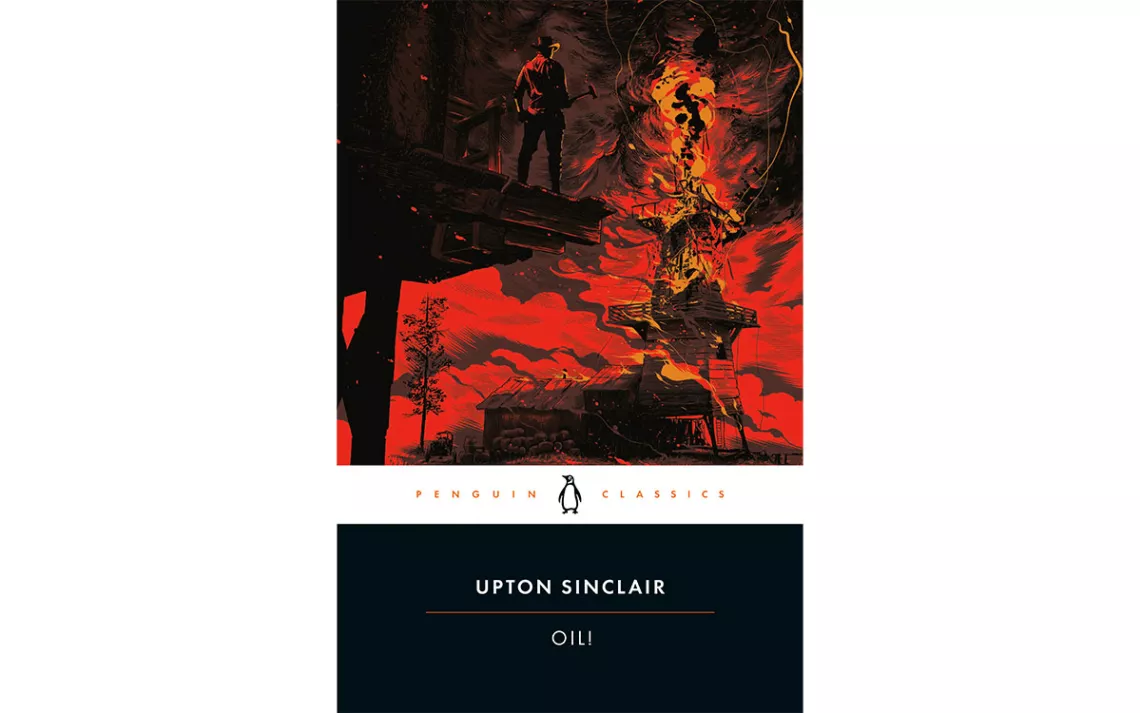
Oil!
By Upton Sinclair
Penguin Classics, 2023
At the beginning of his new introduction to Upton Sinclair's 1926 novel, Oil!, Michael Tondre ponders the exclamative in the title. It acknowledges the explosive emotions and actions associated with oil. It is also the precise shape of a “gusher”—the fountain of oil that occasionally erupts into the sky during the drilling process.
Despite the trigger that will be for environmentally minded readers, Oil! is, at root, a remarkably prescient commentary on class consciousness that is shockingly relevant to our contemporary age. It speaks directly to our current moment—a tangle of industry, capital, and environmental impact—and does so through a glaring indictment of a time in which we could have done better.
Sinclair takes the reader on so gradual a journey that it begins to feel meandering at parts—enough to drive one to inquire when, oh when, do we get to big evil oil? But Sinclair is too intentional for that. We follow the gold-hearted protagonist Bunny, heir to the Ross Incorporated oil fortune, whose underhanded dealings with lease purchases snowball into a drama about a corrupt sitting president. After all, big corruption like that never starts so large; it is the small steps along the way, the ones that are easiest to stop and yet pose great threat precisely because of their innocuousness.
Bunny tags along with his father as their oil empire expands. He is an uncomfortable beneficiary of these profits; sweet-hearted Bunny just wants everyone to get along and cannot find it in himself to reconcile the trials suffered by his working-class friends with the money his father is raking in. As the profits grow, so do the abuses until both are so extreme one might wonder how anyone allowed it to get to this point. But Sinclair has led us along for each step, small and large, from the procurement of the wood for the derricks to the literal firestorms, and we know exactly how we got here.
While Oil! is certainly an exposé of the production process, Sinclair aims higher—he draws back the veil of myth. Oil production is often a deeply dehumanized process. There are massive rigs in the middle of the ocean, and across the desert wells pump day and night, but rarely are we, the uninvited public, offered any real entrée into the process. The intangible mythos of oil is best maintained when the only true interaction the consumer has with it is as a final product—appearing as if out of thin air. Sinclair is out to neutralize this immaculate conception story and expose the oil industry, at all its levels, as a normal system—fundamentally mortal in its corruption, its exploitation, its wastage, and its greed. Oil is just like any other industry, and it is because of how very ordinary it is that we can take it down.
Tondre remarks in his introduction that we’ve known what oil does and what it creates since 1927, and his critique of this fact is scathing. We’ve had nearly a century (!) to fix what oil has done to us, and yet we’re only just moving out of the earliest phases of denial. It is precisely how gradual Bunny’s process of realization is that makes Oil! so remarkable. Sinclair knows how hard it is to tear ourselves away from such convenience, such glamor, such riches! It’s difficult, but we must do it, and 100 years has been too protracted a weaning. —Fae Rauber
 The Magazine of The Sierra Club
The Magazine of The Sierra Club
